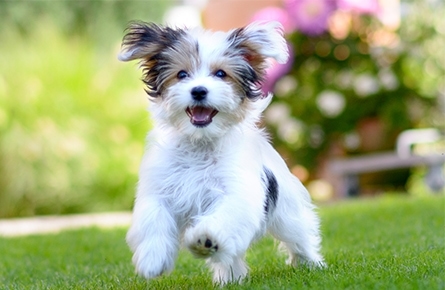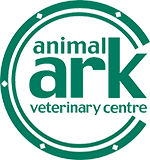In male dogs, both testes are removed; this is known as ‘castration’. In female dogs, either the uterus is removed or both the uterus and the ovaries; this is known as ‘spaying’.
Spaying a female dog eliminates the ability to reproduce, and your dog will no longer come into season. Females can be neutered from six months of age; for most breeds, we suggest spaying females before they have had a season, known as pre-season. If your dog is older than six months or has already started having seasons, we would need to wait three months after a season to ensure we are operating at the best possible time.
What is meant by spaying?
Spaying is the common term used to describe the surgical procedure known as an ovariohysterectomy. In this procedure, the ovaries and uterus are removed completely in order to sterilize a female pet. Sometimes an ovariectomy is performed where only the ovaries are removed.
What is neutering?
Neutering (also known as castration) is the common term used to describe the surgical procedure during which both testicles are removed in order to sterilize (make infertile) a male pet, therefore stopping his ability to reproduce.
 Neutering or spaying your dog:
Neutering or spaying your dog:
-
Prevents unwanted pregnancies and womb infections
-
Can help prevent tumours and breast cancer
-
Can also help prevent testicular cancer and prostate disease
-
Assists in preventing roaming and aggressive behaviour
-
It’s normal to neuter! 71% of owned dogs in the UK are neutered*
*PSDA Paws report 2020
At what age are dogs neutered or spayed?
Neutering is usually carried out at around six months of age for males and pre-season for female dogs, reducing the likelihood of females developing mammary cancer. We would also consider your dog’s breed, size, overall behaviour and other risk factors to provide the most suitable recommendation for your dog based on the latest evidence.
Male dogs older than six months can be neutered at any stage; however, we would still consider the dog’s breed, size, overall behaviour and other risk factors upon discussion of the procedure.
If your dog is not spayed before her first season, we would wait three months after the season.
Whats included in our Spays & Neuters for cats & dogs?
| 1 | Veterinary pre-operative examination to assess your pets condition prior to surgery | |
| 2 | Cats & Dogs hosptitalized in separate wards to prevent cats becoming stressed | |
| 3 | Tailored anaesthetic drug protocol specific to each patient - including strong pain relief and anti-inflammatories | |
| 4 | IV cannula placement as standard in order to administer medication but also to provide a life-line in the event of an emergency. This means your pets leg will be clipped as well. | |
| 5 | Operation done under the highest surgical standards: surgeon in full surgical PPE and patients clipped and prepared to reduce risk infections and surgical complications but also reduce the need for further medication | |
| 6 | Intensive anaesthetic monitoring from a trained registered nurse, or a student nurse being overseen by a registered nurse, during surgery. All of our nurses have completed additional Association of Veterinary Anaesthetists (AVA) accreditated training. | |
| 7 | Use of multiparameter monitors measuring heart rate, respiratory rate, blood oxygen level, respiratory carbon dioxide levels, blood pressure, body temperature. | |
| 8 | Lubrication of eyes during surgery to prevent eyes becoming dry and developing corneal ulcers. You have the option to purchase eye drops for ongoing post-operative care | |
| 9 | Local pain block included at the site of surgery to reduce pain: this is an injection of short-acting pain medication at the area of incision or organ removal to reduce intra-operative pain and reduce surgery risk. | |
| 10 | Free post-operative K-Laser™ therapy to reduce inflammation, reduce pain & promotre wound healing | |
| 11 | Nurse monitoring throughout the recovery process | |
| 12 | Same day discharge with a nurse who will discuss the surgery with you and explain the post-operative care process | |
| 13 | 1 week of post operative pain relief included | |
| 14 | 2 free post operative checks where discounted laser therapy also available | |
| 15 | Free nail clip under anaesthesia if appropriate |
Should I let my dog have one litter before spaying her?
This happens to be a common question, and there are no known health benefits to letting your dog have a litter; this is also the same for cats and rabbits.
General anaesthesia
Your pet requires a general anaesthetic for neutering; here at Animal Ark, we have measures in place to ensure their safety during the procedure. A dedicated Registered Veterinary Nurse (RVN) will monitor your pet throughout their surgery and recovery. All anaesthesia comes with some form of risk; however, these are very low, especially neutering, as pets are often young, fit, and healthy when having this procedure.
Risk levels of anaesthesia increase with a pet’s age, certain breeds and if your pet has any underlying health conditions. We can perform a pre-anaesthetic blood test before your pet’s surgery, to detect any underlying illnesses; this can be discussed when booking in for the procedure and on the day of their surgery. Your pet will receive a premedication to relax them and will also receive two types of pain relief. Rest assured the Animal Ark team will be with your pet every step of the way.
Your pet will stay the day with us
On the day of the procedure, please bring your dog on a secure harness or lead; during the admission appointment, we will discuss the procedure and go through the consent form. Please note we must gain a signature from the registered owner (over 18) or authorised agent on the consent form. Your dog, cat or rabbit will be admitted as a ‘day patient’, and they will be discharged later that day once our team are happy with how your pet has recovered.
During your pet’s discharge appointment, the team will go through everything you need to know about caring for your pet after their surgery and their pain relief medication. We are always at the end of the telephone for you and your pet, so please contact us if you have any further questions once you have your pet settled back at home call us via 020 8599 8544
Highly advised but optional:
- Pre-anaesthtic blood test: This bloodwork allows your veterinarian to assess your pet’s overall health, ensuring that your pet is a good candidate for anesthesia. If preanesthetic bloodwork shows any abnormalities, these abnormalities can be addressed by making any necessary adjustments to your pet’s treatment plan thereby reducing the risk of an anaesthesia
- Intraoperative iv fluids: maintains your pet's blood pressure and decrease the risks of organ damage from decreased blood pressure, prevent dehydration and to aid in recovery.
Patients will require either a buster collar or medical suit at an additional charge to prevent your pet from licking or opening their surgical incision and reduce the risk of post-operative complications
Please also be aware that we are dedicated to providing the best care for your pet during their stay with us: Our nursing teams are overseen by our nurse supervisors who are certificate holders in Emergency & Critical Care. Difficult anaesthesias are overseen by our Clinical Director who has completed specialised training in Anaesthesia at a referral hospital in the US.




Animal Ark Social Media